Highly sensitive and multifunctional tactile sensor using free-standing ZnO/PVDF thin film with graphene electrodes for pressure and temperature monitoring
- PMID: 25601479
- PMCID: PMC4298719
- DOI: 10.1038/srep07887
Highly sensitive and multifunctional tactile sensor using free-standing ZnO/PVDF thin film with graphene electrodes for pressure and temperature monitoring
Abstract
We demonstrate an 80-μm-thick film (which is around 15% of the thickness of the human epidermis), which is a highly sensitive hybrid functional gauge sensor, and was fabricated from poly(vinylidene fluoride) (PVDF) and ZnO nanostructures with graphene electrodes. Using this film, we were able to simultaneously measure pressure and temperature in real time. The pressure was monitored from the change in the electrical resistance via the piezoresistance of the material, and the temperature was inferred based on the recovery time of the signal. Our thin film system enabled us to detect changes in pressure as small as 10 Pa which is pressure detection limit was 10(3)-fold lower than the minimum level required for artificial skin, and to detect temperatures in the range 20-120 °C.
Figures
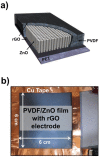
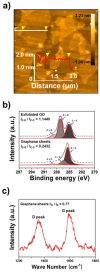

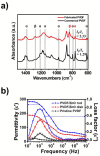

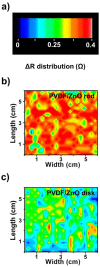
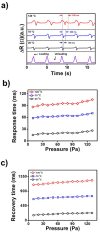
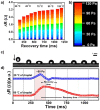
References
-
- Pang C. et al. Flexible and highly sensitive strain-gauge sensor using reversible interlocking of nanofibres. Nature Mater. 11, 795–901 (2012). - PubMed
-
- Pecora A., Maiolo L., Maita F. & Minotti A. Flexible PVDF-TrFE pyroelectric sensor driven by polysilicon thin film transistor fabricated on ultra-thin polyimide substrate. Sensor Actuat. A-Phys. 185, 39–43 (2012).
-
- Hammock M. L. et al. 25th Anniversary Article: The Evolution of Electronic Skin (E-Skin): A Brief History, Design Considerations, and Recent Progress. Adv. Mater. 25, 5997–6038 (2013). - PubMed
-
- Lee J. S., Shin K.-Y., Kim C. & Jang J. Enhanced frequency response of a highly transparent PVDF–graphene based thin film acoustic actuator. Chem. Commum. 49, 11047–11049 (2013). - PubMed
-
- Kim D.–H. et al. Epidermal Electronics. Science. 333, 838–843 (2011). - PubMed
Publication types
MeSH terms
Substances
LinkOut - more resources
Full Text Sources
Other Literature Sources

